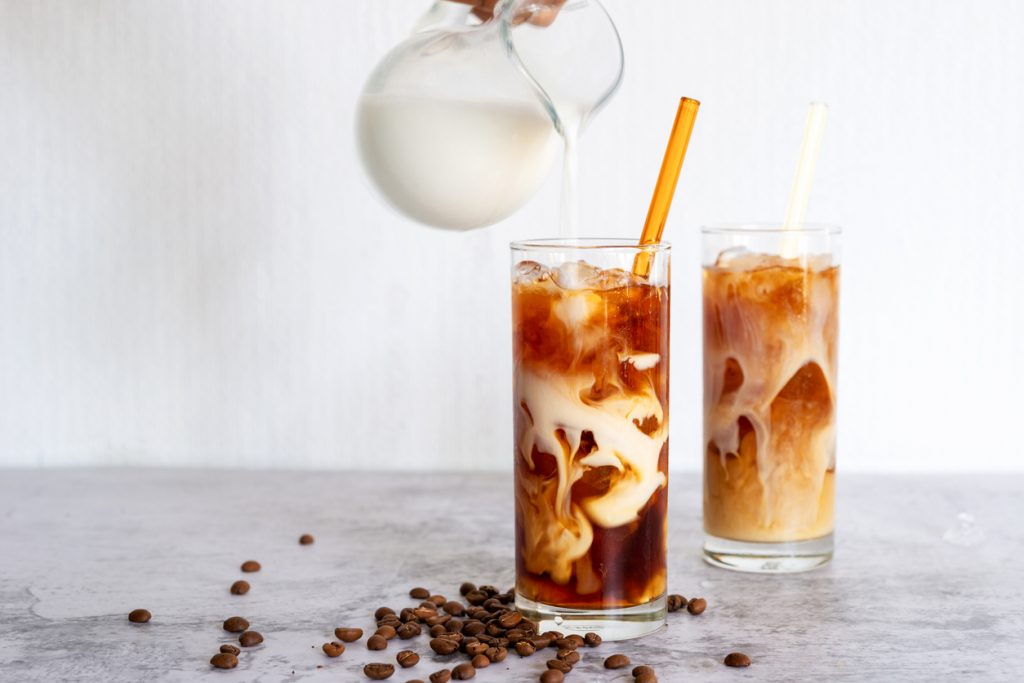Cold brew coffee has been all the rage lately. It has been showing up in coffee shops around the country, which often commands a premium price. But what makes cold brew coffee so different than regular coffee, and is it possible to make it at home? With the summer heat, many coffee lovers are looking for a caffeine boost that is also refreshing.
What is Cold Brew Coffee?
Cold brew coffee is just what it sounds like. Traditional coffee brewing takes place at temperatures between 195 and 205 degrees Fahrenheit. Cold brew coffee uses water between 45 and 55 degrees Fahrenheit.
This lower temperature results in the different flavors of cold brew coffee. Most people find cold brew coffee less acidic and smoother than traditional coffee made with hot water. Of course, individual taste perceptions vary. Cold brewing also extracts less caffeine, although this doesn’t mean that cold brew has less caffeine.
What is the reason for the change in flavors? Coffee beans are full of oils, acids, and other water-soluble compounds and extracted during coffee brewing. Each of these oils and acids is extracted at a specific rate based on the water temperature during the brewing time. The (much) lower water temperature and (much) longer extraction time of cold brewing extract different oil proportions than hot brewing methods. The varying ratio of oils, acids, and compounds lead to a distinctive flavor profile.
There is one thing to keep in mind: cold brew coffee should not be confused with iced coffee. Iced coffee is standard hot brew coffee (from a coffee maker, Keurig, French press, etc.) cooled with ice and/or cream. While the cooler serving temperature does give it a subtly different flavor than hot coffee straight from the carafe, it has nothing on real cold brew coffee. You can, of course, serve cold brew coffee over ice.
How to Make Cold Brew
Fortunately for those who want to try out cold brew coffee, the recipe is quite simple, and no specialized equipment is necessary. The ingredients list is quite short:
- Ground coffee — a medium-coarse grind is common, but feel free to experiment. Remember, a fine grind means filtering will take longer.
- Water — filtered is, of course, preferred. If you don’t have good water out of your tap, using bottled (but not distilled) is fine.
As far as equipment for your cold brew, that list is also short:
- A mason jar, French press, pitcher, or another medium-sized vessel to steep in. You’ll also need another one to assist in straining.
- A coarse and fine filter. If you are using a French press, the plunger screen works great as a coarse filter. A regular coffee filter or fine cheesecloth works well for a fine filter.
Since container size can vary, make sure you maintain a proper coffee-to-water ratio. Start with ¾ cups of ground coffee to 4 cups of water (for a medium container) or 1.5 cups of ground coffee to 8 cups of water for a larger one. If neither of these work, keep a ratio of 1 part coffee to 4.5 parts water in your container of choice.
After you have combined the ground coffee and water in the container, stir it to ensure that all the water and coffee are thoroughly mixed. If you’re using a container with a lid, go ahead and put the lid on. If you don’t have a lid, some cheesecloth or wax paper fitted loosely should be fine.
Please place it in a room-temperature location out of direct sunlight for about 12 to 18 hours. While it’s steeping, there no need to stir or otherwise disturb it; just let it do its thing.
After the 12 hours are up, it’s time to filter. Unless you like cloudy or grainy coffee, it’s best to filter in two stages. Pour your coffee through a kitchen sieve (or use the French press plunger) into the second container. Dump out the grounds and give the original container a quick rinse. Then repeat the process with the finer filter, pouring back into the original container. That’s all there is to it!
Enjoy Your Cold Brew
Keep in mind that this recipe makes a cold brew coffee concentrate. You won’t be drinking this straight; instead, use it as a base for your coffee. Try mixing 1 part concentrate with 3 parts water (cold or hot), milk, cream, or other coffee additions. If you want a stronger cup, reduce the ratio to 1 part coffee and 2 parts additions. Don’t forget, though, that while cold brewing extracts less caffeine than hot, using a higher coffee-to-water ratio makes up for the lower caffeine extraction. This is why you cut it with milk or water.
Kept in the refrigerator, cold brew coffee should stay fresh for two to four weeks.


Leave a Reply